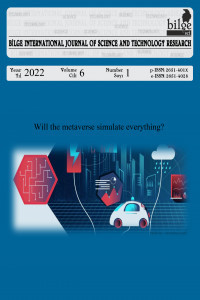Characterization Of Soil For Road Shoulders Mixed With Reclaimed Asphalt Pavement Waste
Characterization Of Soil For Road Shoulders Mixed With Reclaimed Asphalt Pavement Waste
___
- Alexander, L. T., and Cady, J. G. (1962). Genesis and Hardening of Laterite in Soils.
- Arulrajah, A., Piratheepan, J., and Disfani, M. M. (2014). Reclaimed Asphalt Pavement and Recycled Concrete Aggregate Blends in Pavement Subbases: Laboratory and Field Evaluation. Journal of Materials in Civil Engineering/ American Society of Civil Engineers.
- Asphalt Pavement Alliance, a Coalition of Asphalt Institute. (2004). Retrieved from http://www.asphaltalliance.com
- Asphalt Recycling and Reclaiming Association. (2001). Federal Highway Administration (Vol. 53).
- Aun.OT. (1982). Malaysian Soils and Associated Problems,. Geotechnical Engineering Course, Universiti Malaya, (1982).
- Ayan, V. (2011). Assessment of Recycled Aggregates for Use in Unbound Subbase of Highway Pavement. Ph.D Thesis, Kingston University, London, UK.
- Balgowan, R. (2014). Pavement and Shoulder Edge Drop-Offs, 6736.
- Bawa, K. S. (1957). Laterite Soil and Their Engineering Characterisics. Proc.Am Soc.Civ. Eng.,83 (SM..4), Paper 1428): 1-15.
- Bennert, T., and Maher, A. (2005). The Development of a Performance Specification for Granular Base and Subbase Material. The Development of a Performance Specification for Granular Base and Subbase Material, FHWA-NJ-20.
- Bennert, T., PappRelated, W., Maher, A., and Gucunski, N. (2000). Utilization of Construction and Demolition Debris Under Traffic-Type Loading in Base and Subbase Applications. ( pp. 33-39 In Transportation Research Record : Journal of the, No. 1714, and Washinton DC, Eds.).
- Brand, E. W., and Hongsnoi, M. (1969). Effects of Methods of Preparation on Compaction and Strength Characteristics of Lateritic Soils. Proc. Spec. Sess. Int. Conf. Soil Mech. Foundation Eng., 7th, Mexico, 1: 107-116.
- David, M. (2007). Essentials of Soil Mechanics and Foundations. Education Ltd, Pearson Prentice Hall. 7th Edition.
- Tech. Bull 128J; U.S. Dept. O F Agric., Washington, D.C.
- ISSN: 2651-401X
- Yayın Aralığı: Yılda 2 Sayı
- Başlangıç: 2017
- Yayıncı: Kutbilge Akademisyenler Derneği
Hayati MAMUR, Çiğdem AKYILDIZ, Mehmet Ali ÜSTÜNER
The Effects of the Traditional Data Augmentation Techniques on Long Bone Fracture Detection
Gülnur Begüm CANGÖZ, Selda GÜNEY
Climate Change Will Cause a Pollination Crisis in the Mediterranean Basin
Antibacterial activity of the vapor phase of Thymus mastichina essential oil
Lucia GALOVİČOVÁ, Natália ČMİKOVÁ, Veronika VALKOVÁ, Miroslava KAČÁNİOVÁ
Realization of a Bionic Hand Controlled via Bluetooth Communication Utilizing a Microcontroller
Hayati MAMUR, Ceren DÖLEK, Mehmet Ali ÜSTÜNER
Evaluation of the Warehouse Location Alternatives for Possible Great Istanbul Earthquake
Asli Gul YALCİNDAG, Mehtap DURSUN, Nazlı GOKER
Chantell GOUWS, Gerrit Jan BREUKELMAN, Lourens MİLLARD
Characterization Of Soil For Road Shoulders Mixed With Reclaimed Asphalt Pavement Waste
Saber Shah SABERİ, Azman MOHAMED
Antifungal Efficacy of Mint Essential Oil Against Penicillium spp. Inoculated on Carrots
Veronika VALKOVÁ, Hana ĎÚRANOVÁ, Lucia GALOVİČOVÁ, Nenad VUKOVİC, Milena VUKİC, Miroslava KAČÁNİOVÁ
